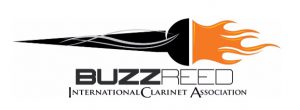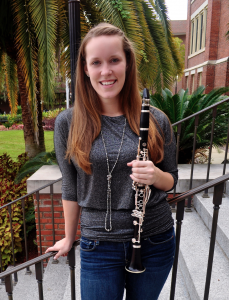
If you’re like me and teach private lessons full time, you probably have a lot to carry and keep track of. I teach around 65 students per week and travel to eight schools and several homes. The less I have to tote around with me, the more organized I am and the less I sweat running between my car and lessons! I am able to consolidate A LOT of my resources by using mobile apps and websites on my phone and iPad. Here is a quick rundown of how I use these tools to run my studio:
Tools for Organization:
If you want to remember who you’re teaching when, who owes you money, and what each student is working on, you need to develop a bookkeeping and note taking system. The busier you are, the more crucial this is! I have eliminated my mileage log, bulky planner, payment log, and lesson notes by moving all of those things to a digital format.
I write off a TON of mileage and often I just have enough time in my car to get from one school to the next. This app tracks when I’m driving and creates the log for me, so I just classify personal versus business miles. The free version tracks 40 drives per week, so if you want to turn the tracking on and off or only write off a few drives per week, this is a good option. I pay for the full version because I average more like 140 drives per month. You can also start to auto-classify your drives if you visit the same places often. The auto-classify option ends up saving me a lot of time! The app will give you monthly and annual views and is ready to go at tax time when you need your final business mileage for the year.
Google Drive and Google Sheets
I use Google Sheets to write out my weekly schedule, track payment, and sync these to all of my devices. I can share my schedule with band directors, students, and parents so they can view (not edit) my schedule. This is most helpful for schools where band only meets every other day on an A/B schedule. Others can view the document in real time to see any recent updates or changes. I also use google sheets to track lesson payment. I have students who pay with cash, check, and even online so I need to be able to record payment whenever I receive it. If a student shows up at the end of my teaching day with cash in hand and I don’t record it on the spot, I will certainly forget and be hassling them the next week unnecessarily!
Evernote
Evernote is my note-taking app of choice to keep all of my students’ information and progress straight. This app allows you to create “notebooks” and then notes therein with text, photos, and reminders. You can customize this to suit your needs, but I create a notebook with each student’s name and then have notes such as: profile (school, grade, equipment info), repertoire (there’s nothing worse than forgetting what solos you assign from year to year), progress (lesson notes, individual needs, lesson planning), and audition notes (photos of solo/ensemble score sheets, honor band results, etc.).
Camscanner
There are numerous scanning apps to photograph and save music in PDF form. This helps me keep an archive of audition music, scale studies, excerpts, etudes, and solos that my students do not have to purchase for lessons. This comes in handy when I teach Skype lessons and need to send a quick PDF to a student for reference, or when a pianist needs music on the fly and I am not in front of a scanner/copier. Luckily most schools have these resources, but there are always times when I have an in-home lesson and have run out of copies of my scale sheet!
Tools for Instruction:
Thankfully, the days of carrying 100 books and a 5 lb Doctor Beat are behind us! While I am not fully digital with my excerpts and solo repertoire, I can do a lot on my phone and iPad that saves me from hauling a back-breaking music bag.
Tonal Energy
This combination metronome/tuner is not free, but is well worth the few dollars in the App Store. This is also my met/tuner of choice for students because a mobile app gives them no excuse to practice without these tools! The home screen (for Apple) has a tuner that shows cents sharp/flat and lights up a smiley face when you are in tune. You can even set the skill level between intermediate, advanced, and pro if you want to make the smiley easier or harder to achieve. While the tuner is running, you can use the metronome with various meter and subdivision options. I also love the tone generator with equal and just intonation options. This is probably the main feature setting Tonal Energy apart from free mobile apps. For example, when I am teaching altissimo range, or the dreaded Capriccio Espagnol excerpt to high schoolers, it is invaluable to have a drone running as they play! The tuner and tone generator also have pretty good midi sounds for individual instruments and transposes for you. Finally there is an analysis tab to record and chart volume and pitch.
Scales
This is a pretty simple free app that generates scale flash cards to quiz students. You can modify Major and/or minor and how many sharps/flats the student will be quizzed on. You can tap the screen or shake your phone to change scales. This is just a fun way to randomly ask scales so students don’t feel like I am always choosing their least favorite ones! No more digging in your bag for your hand-written flash cards!
Sight Reading Factory
This app (also a website) requires a subscription, but is again worth the investment. Many schools provide students with a login code or sell reduced subscriptions. In Middle Tennessee this is the sight reading generator that we use for All-Midstate band auditions. There are 6 levels ranging from very basic to very advanced. You select instrument, level, time signature (you can choose random) and key signature (random option also). Each level has a breakdown to show the new range, rhythms, and key signatures that are included. When students practice on their own they can use a “play back” feature to hear the example played correctly and compare this to their performance. The downside is they do not get feedback from the app on their own performance and the examples are not very tuneful.
Voice Memo
When you don’t need a high quality recording, voice memo is a handy resource to give students playback options. The easier it is for students to record themselves, the more likely they are to do it. Occasionally, I ask students to send me recordings if we miss a lesson or if I need to hear their progress during the week. I also record on voice memo from time to time to send recordings to parents via email or text. “Listen to the progress Jessica is making on her solo!” Or “Here is a fun duet we played today! Enjoy!” This is a quick way to touch base and get families excited about lessons.
This is hardly an exhaustive list, but rather the resources I find most helpful. Please comment with the apps that help with your private lesson studio!
About the Writer
 Jennifer Zimmerer holds a Master’s Degree from The Florida State University and a Bachelor’s Degree from Towson University. She is an active teacher, performer, and clinician in the greater Nashville area.
Jennifer Zimmerer holds a Master’s Degree from The Florida State University and a Bachelor’s Degree from Towson University. She is an active teacher, performer, and clinician in the greater Nashville area.

Comments are closed.